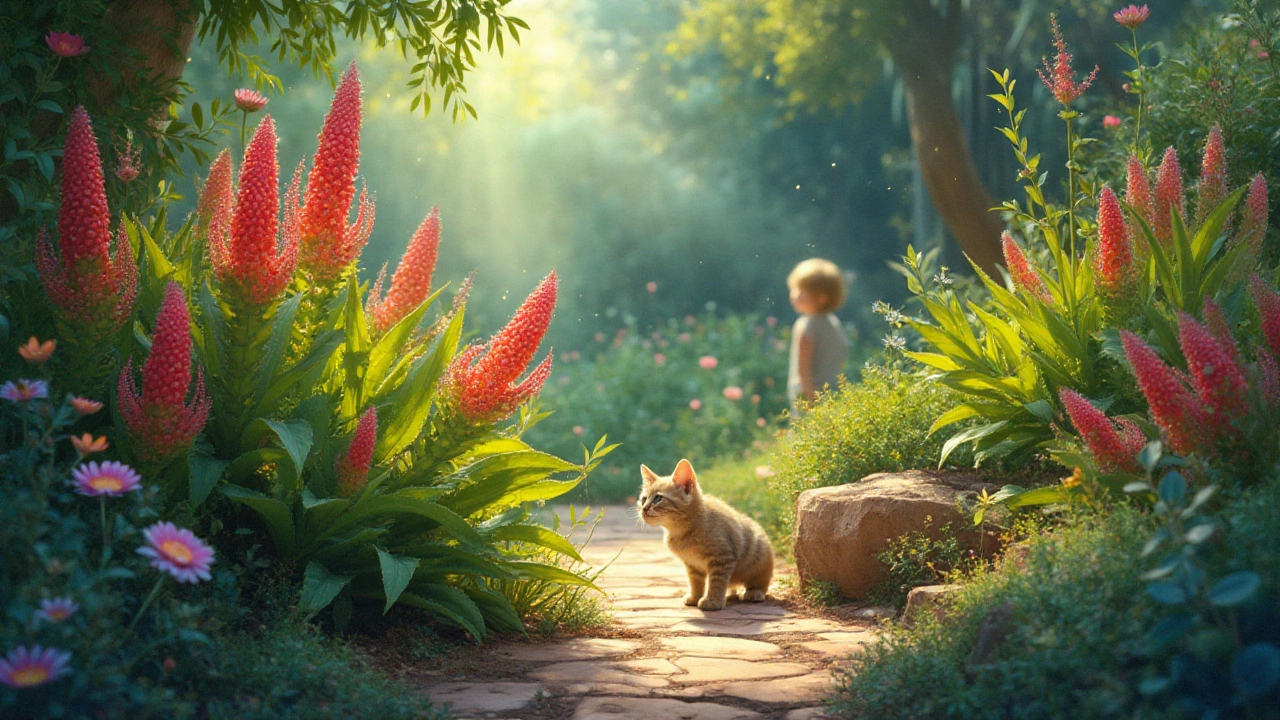The Mother of Thousands, a striking and unique succulent, is both fascinating and controversial due to its potential toxicity. While cherished for its easy cultivation and proliferation, concerns arise for households with children and pets. Understanding this plant's characteristics and precautions is essential for those looking to incorporate it into their garden. Discover its potential risks and explore safe gardening practices. Learn how to enjoy this plant responsibly without compromising safety.
Gardening Safety: Protect Yourself and Your Plants with Smart Practices
When you step into your garden, you're not just tending to plants—you're managing gardening safety, the set of practices that keep you and your environment protected while working with soil, tools, and plants. Also known as safe gardening, it’s what separates a fun hobby from a trip to the ER. Many people think gardening safety is just about wearing gloves, but it’s deeper than that. It’s about understanding what’s in your soil, how your tools wear out, and when a chemical spray might do more harm than good.
Take garden tools, the physical equipment used for digging, cutting, and planting, from trowels to pruners. Also known as gardening implements, they’re the first line of defense—or the first source of injury. A dull pruner doesn’t just make work harder—it can slip and slice your hand. Rusty shears can introduce bacteria into plant wounds. And let’s not forget the weight of a full wheelbarrow or the strain of bending all day. Proper tool maintenance isn’t luxury—it’s survival. You wouldn’t drive a car with bald tires, so why use a broken trowel?
protective gear, items like gloves, goggles, and long sleeves that shield you from physical and chemical hazards. Also known as gardening PPE, it’s not optional if you’re handling compost piles, pesticides, or thorny plants. That thick glove you ignore? It stops poison ivy oils from sinking into your skin. Those sunglasses? They block UV rays reflected off wet soil. Even a simple hat reduces heat stress during summer planting. The posts below show real cases where skipping gear led to rashes, infections, or worse—and how simple fixes prevented them.
Then there’s chemical safety, how you store, mix, and apply fertilizers, pesticides, and herbicides without poisoning yourself or leaching toxins into groundwater. Also known as pesticide handling, it’s where many gardeners go wrong. You read the label? Good. But do you know what happens when you mix two products? Or leave a bottle in the sun? Or rinse your tools in a rain gutter? The risks aren’t theoretical. One wrong step can kill bees, contaminate your veggies, or burn your lungs. The guides here break down exactly what to avoid—and what to do instead.
And don’t forget soil health, the condition of your dirt—its structure, microbes, and chemical balance—that directly affects how safe it is to grow food or touch with bare hands. Also known as garden soil quality, it’s the hidden factor in gardening safety. Is your soil full of lead from old paint? Are you using styrofoam as mulch without knowing the risks? Are you adding manure that hasn’t composted long enough? The answers matter. Your plants absorb what’s in the ground. And so do you—through skin contact or dust inhalation.
These aren’t abstract ideas. They show up in every post below. You’ll read about why you shouldn’t plant hydrangeas near hot balcony walls (it’s not just about sun—it’s about heat stress on your hands too). You’ll see how drip emitters can leak and soak your clothes with contaminated water. You’ll learn why rabbits eating zinnias might mean your garden is too close to a wild habitat—and what that says about pest control safety. You’ll find out if styrofoam in vegetable gardens is safe, and what to do if your soil feels too dense to work with.
This isn’t about fear. It’s about awareness. Gardening should feel peaceful, not risky. The best gardeners aren’t the ones with the fanciest tools—they’re the ones who know when to step back, check their gear, and ask, "Is this safe?" Below, you’ll find real fixes, real stories, and real ways to make your garden safer—one plant, one tool, one decision at a time.
